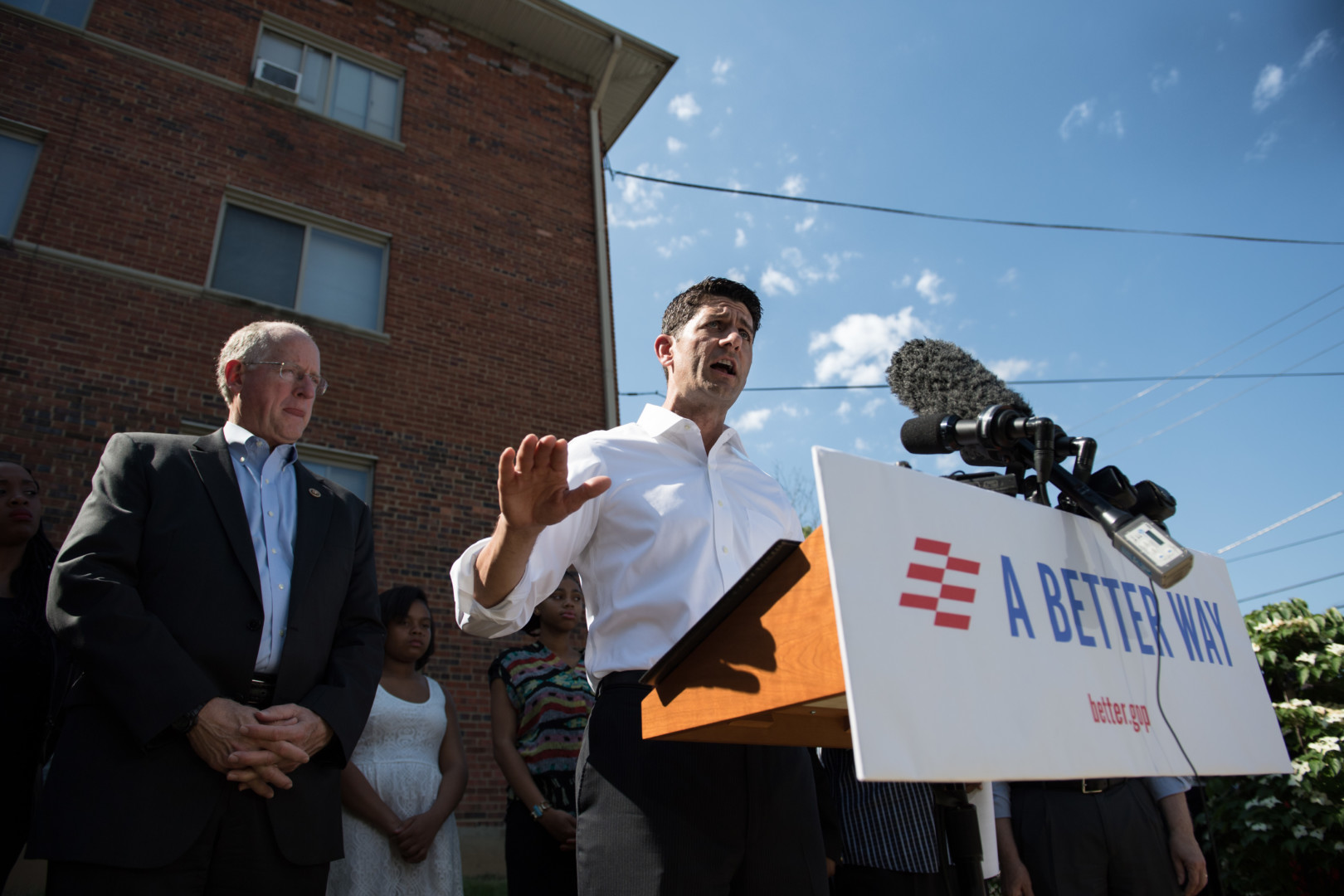A key plank of the House GOP’s blueprint to replace the Affordable Care Act would fail to provide adequate health insurance to people with existing medical conditions without substantial state or federal funding, according to veteran health care officials and experts.
A plan touted by House Speaker Paul Ryan (R-Wis.) would give Americans priced out of marketplace coverage the ability to shop for insurance in state-run high-risk pools, which are reserved for the costliest people in the health care system.
Supporters of this approach say it would make regular marketplace plans cheaper while still providing affordable coverage to those with pre-existing conditions.
But prior experience with the pools, which were operated in 35 states before the ACA, shows they had inconsistent results and were rarely sufficient to cover everyone in need.
Studies estimate the pools covered about 200,000 people nationwide by the time the ACA was passed. That’s a tiny fraction of the 52 million Americans with pre-existing conditions that could become uninsurable if Obamacare is repealed. (Of course, some people with pre-existing conditions may get coverage through their employer or a government health program.)
The pools were “designed to serve a very narrow segment of the population,” Ryan Burt, who worked in high-risk pools for more than two decades, said in an interview.
To make the pools work on a larger scale would require substantial financing, something Kathleen Sebelius found out when she was secretary of Health and Human Services under former President Barack Obama.
Before Obamacare’s insurance reforms took effect in 2014, the law set aside $5 billion in federal funds to establish a temporary national high-risk pool program. More than 130,000 people signed up, forcing administrators of the national pool to suspend enrollment to avoid running out of funds, according to the Government Accountability Office.
“Well before January of 2014, all of them [the high-risk pools] ran out of money because the costs were far more expensive than anyone could have, would have predicted just given the fact that there’s some really sick folks out there who did not have coverage,” Sebelius said in a phone interview.
Last week, House Republican leaders proposed distributing “State Innovation Grants” to fund high-risk pools and other health care initiatives, though a policy document provides no funding details. The GOP’s election-year policy platform, “A Better Way,” proposed doling out $25 billion over a decade to divide between states for high-risk pools.
“Twenty-five billion dollars over 10 years is not even a drop in the bucket in terms of doing this sufficiently,” said Linda Blumberg, senior fellow at the Urban Institute’s Health Policy Center.
Conservative health policy experts James Capretta and Tom Miller came to a similar conclusion, arguing that providing adequate coverage for two to four million people through high-risk pools could cost as much as $15 to $20 billion per year.
Dean Clancy, a health policy consultant who served in the George W. Bush administration and a proponent of high-risk pools, and Betsy McCaughey, at the London Center for Policy Research, also said more federal funding is needed.
“The amount is insufficient: only $2.5 billion a year. Not enough to make it work,” Clancy wrote in a blog post published Tuesday. “The needed amount is more like $16 billion. Which may seem large, but it’s a small amount compared to Obamacare’s $56 billion (in annual subsidies).”
Without enough federal aid, states could be faced with picking up the rest of the tab — something they didn’t do in the past. Before the ACA, many states financed the pools through enrollee premiums and fees on insurers. Some, such as California, also limited access to save money, forcing hundreds of people to wait for coverage.
The GOP plan said their new approach of state grants would not lead to waiting lists or caps on enrollment. “Why would anyone allow (the state grants) to potentially harm the very patients they are intended to help?” the policy brief states.
Backers of high-risk pools say states can use federal grants to reduce premiums or subsidize coverage for those with lower incomes.
Only 200,000 people enrolled in the pools in part “because many HRPs did not offer financial assistance to lower-income participants, a few charged much higher premiums than Wisconsin, and because of some state-imposed limitations,” say Mark Litow, who was involved in Wisconsin’s risk pool, and Merrill Matthews, with the Institute for Policy Innovation. “All of those problems are easily fixed,” they write in a RealClearHealth op-ed.
Miller, from the conservative American Enterprise Institute, said fees on health insurers may help cover some of the costs, but states should also consider raising taxes or using general revenue to pay for coverage.
“The key issue … is just who should be responsible for bearing the burden of financing these pools?” Miller said in an email. “It really shouldn’t become (indirectly) a recycled burden back on those who have enough difficulty already paying for individual market coverage.”
But Burt, who was counsel for the pool in Minnesota, seen as one of the more successful programs, said the pool wasn’t meant to serve all Minnesotans with pre-existing conditions; many participants were also willing to pay higher premiums.
“Let’s face it, risk pools were never meant to be the single-source solution for all of the issues in our health-care system,” he said.

